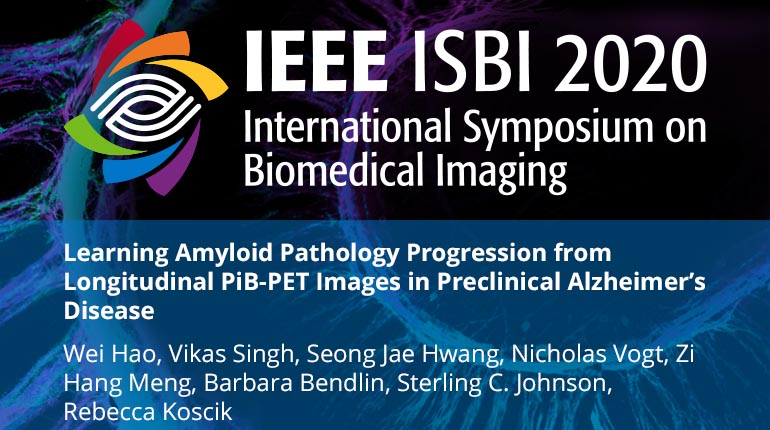
Already purchased this program?
Login to View
This video program is a part of the Premium package:
Learning Amyloid Pathology Progression from Longitudinal PiB-PET Images in Preclinical Alzheimer's Disease
- IEEE MemberUS $11.00
- Society MemberUS $0.00
- IEEE Student MemberUS $11.00
- Non-IEEE MemberUS $15.00
Learning Amyloid Pathology Progression from Longitudinal PiB-PET Images in Preclinical Alzheimer's Disease
Amyloid accumulation is acknowledged to be a primary pathological event in Alzheimer's disease (AD). The literature suggests that propagation of amyloid occurs along neural pathways as a function of the disease process (prion-like transmission), but the pattern of spread in the preclinical stages of AD is still poorly understood. Previous studies have used diffusion processes to capture amyloid pathology propagation using various strategies and shown how future time-points can be predicted at the group level using a population-level structural connectivity template. But connectivity could be different between distinct subjects, and the current literature is unable to provide estimates of individual-level pathology propagation. We use a trainable network diffusion model that infers the propagation dynamics of amyloid pathology, conditioned on an individual-level connectivity network. We analyze longitudinal amyloid pathology burden in 16 gray matter (GM) regions known to be affected by AD, measured using Pittsburgh Compound B (PiB) positron emission tomography at 3 different time points for each subject. Experiments show that our model outperforms inference based on group-level trends for predicting future time points data (using individual-level connectivity networks). For group-level analysis, we find parameter differences (via permutation testing) between the models for APOE positive and APOE negative subjects.
Amyloid accumulation is acknowledged to be a primary pathological event in Alzheimer's disease (AD). The literature suggests that propagation of amyloid occurs along neural pathways as a function of the disease process (prion-like transmission), but the pattern of spread in the preclinical stages of AD is still poorly understood. Previous studies have used diffusion processes to capture amyloid pathology propagation using various strategies and shown how future time-points can be predicted at the group level using a population-level structural connectivity template. But connectivity could be different between distinct subjects, and the current literature is unable to provide estimates of individual-level pathology propagation. We use a trainable network diffusion model that infers the propagation dynamics of amyloid pathology, conditioned on an individual-level connectivity network. We analyze longitudinal amyloid pathology burden in 16 gray matter (GM) regions known to be affected by AD, measured using Pittsburgh Compound B (PiB) positron emission tomography at 3 different time points for each subject. Experiments show that our model outperforms inference based on group-level trends for predicting future time points data (using individual-level connectivity networks). For group-level analysis, we find parameter differences (via permutation testing) between the models for APOE positive and APOE negative subjects.
 Cart
Cart Create Account
Create Account Sign In
Sign In





